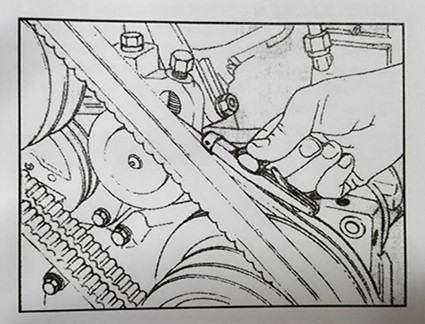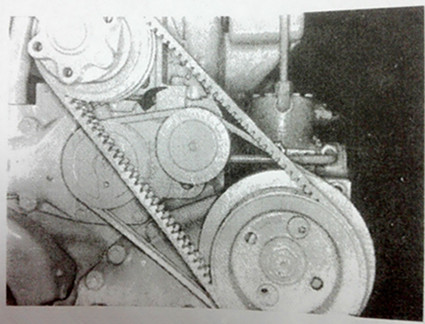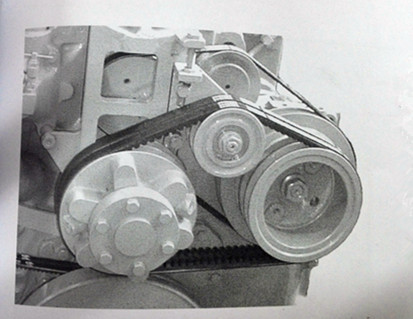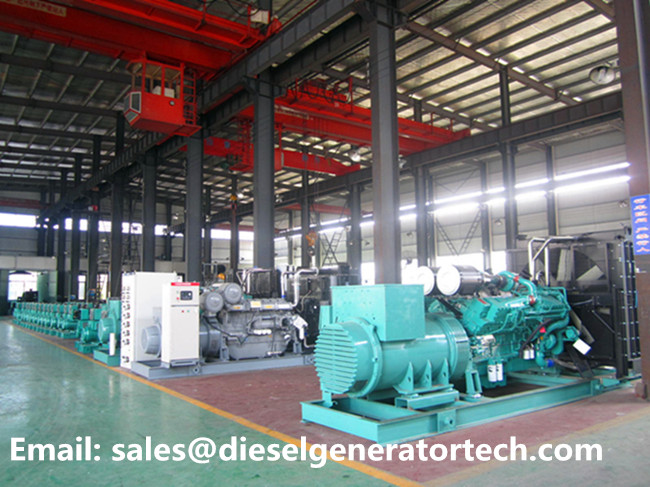As mentioned on the before article, Cummins NT diesel engines maintenance is divided into four level maintenance. Different level maintenance, the check items are also different. In this article, we mainly talk about the "A" maintenance checks - daily. If you are interested or want to know about the related operation, continue reading.
Make a Daily Report of Engine Operation to the Maintenance Department
The engine must be maintained in top mechanical condition if the operator is to get optimum satisfaction from its use. The maintenance department needs daily running reports from the operator to make necessary adjustments in the time allotted and to make provisions for more extensive maintenance work as the reports indicate the necessary.
Comparison and intelligent interpretation of the daily report along with a practical follow-up action will eliminate most failures and emergency repairs.
Report to the Maintenance Department any of the following conditions:
1. Low lubricating oil pressure.
2. Low power.
3. Abnormal water or oil temperature.
4. Unusual engine noise.
5. Excessive smoke.
6. Excessive use of coolant, fuel or lubricating oil.
7. Any fuel, coolant or lubricating oil leaks.
Check Engine Oil Level
Note: Some dipsticks have dual markings, with high-and low-level marks: static oil marks on one side, engine running at low idle speed marks on opposite side. Be sure to use the proper scale.
1. Check the oil level with the dipstick oil gauge located on the engine. For accurate readings, the oil level should not be checked for approximately 15 minutes after the engine is shutdown. Keep the dipstick with the oil pan with which it was originally shipped. Keep the oil level as near the “H” (high) mark as possible.
Caution: Never operate the engine with the oil level below the “L” (low) mark or above the “H” (high) mark.
2. If necessary, add oil of the same quality and brand as already in the engine. See Section 3.
Check Engine Coolant Level
Keep the cooling system filled to the operating level. Check the coolant level daily or at each fuel fill point. Investigate for causes of coolant loss. Check the coolant level only when the system is cool.
Check Belts
Visually check belts for looseness. If there is evidence of belt slippage adjust as folow:
Using the appropriate gauge, Fig 2-1; check and or adjust belts to the tension as indicated in Table 2-1.

Fig. 2-1, Checking belt tension with a gauge
Table 2-1: Belt Tension (Lbs.)
Belt Width Inches | Belt Gauge | New Belt Tension Minimum-Maximum | ·Used Belt Installation Tension* · If Below Min. Tension, Retension to Maximum Tension Minimum - Maximum |
Standard “V” Type Belt 1/2 11/16 3/4 |
ST - 968 ST - 1274 ST - 1138 ST - 1138 |
130 - 150 130 - 150 130 - 150 130 - 150 |
90 - 110 90 - 110 90 - 110 90 - 110 |
V-Riffed 6 Rib |
ST - 1293 |
140 - 160 |
120 - 140 |
NT/NTA8555 15/32 | ST - 968 ST - 1274 | 120 - 140 120 - 140 | 70 - 90 70 - 90 |
* Used belts should be retensioned to values listed in this column. Note: A belt is considered used if it has been in operation for at least 10 minutes. Note: Belts with self tensioning idlers require no adjustment or tension check. | |||
Note: When using the “Krikit” gauge the correct belt tension reading for the belt tested must be read at the point where the top of the black indicator arm crosses the bottom numbered scale. Position the gauge in the center of the belt between two pulleys. The flange at the side of the gauge should be flat against the edge of the belt.

Fig.2-2. Water pump – with idler
Inline Engine Water Pump Belts (With idler)
1. Loosen the capscrews and lockwasher or locknut securing the idler pulley to the bracket or water pump. Fig.2-2.
2. Using a pry bar(NTA) or adjusting screw (FFC) adjust the idler pulley until the proper belt tension is indicated on the gauge. See Table 2-1.
3. Secure the idler pulley or bracket in position by tightening the locknut or capscrews and lockwashers to 45 to 55 ft-lbs [61 to 75 N*m] torque
Fan Drive Belts
1. Loosen the large locking nut on the fan hub shaft or the capscrews securing the fan hub shaft to the mounting bracket. The fan hub will fall out of line when this is done.
2. Turn the adjusting screw to increase the belt tension.
3. Tighten the locknut or capscrews until the fan hub is straight. Snug the nut to maintain the hub in proper alignment with the fan hub bracket.
Caution: Do not adjust to full tension with the adjusting screw, as this would result in overtightening.
4. Belt tension should read as the indicated in Table 2-1 on applicable gauge.
5. Tighten NT Engines locknut to 400 to 450 ft – lbs ]542 to 610 N*m]; then back off 1/2 turn. Fig,2-3.

Fig.2-3. Fan hub installation, NTC-350FFC
6. Recheck the belt tension.
7. Back out the adjusting screw one-half turn to prevent breakage.
Generator/Alternator Belts
Belt tension should be as indicated in Table 2-1 when measured with the applicable gauge.
Belt Installation
If the tension show wear or fraying, replace as follows:
1. Always shorten the distance between the pulley centers so the belt can be installed without force. Never roll a belt over the pulley and never pry it on with a tool such as a screwdriver. Either of these methods will damage the belts and cause early failure.
2. Always replace the belts in complete sets. Belts riding depth should not vary over 1/16 in. [1.6 mm] on matched belt sets.
3. Pulley misalignment must not exceed 1/16 in[1.6 mm] for each ft [0.3m] of distance between the pulley centers.
4. Belts should not bottom on the pulley grooves nor should they protrude over 3/32 in [24 mm] above the top edge of the groove, or 1/32 in [0.8] below the top edge of the groove.
5. Do not allow belts to rub any adjacent parts.
6. Adjust belts to the proper tension.
Readjusting New Belts
All new belts will loosen after running for 1 hour and must be retensioned if necessary. Ref. Table 2-2.
Check for Damage
Visually check the fuel system, etc., for misadjustment or tampering; check all connections for leaks or damage. Check the engine for damage, correct as necessary.

Maybe You Also Like: Cummins NT Diesel Engines Maintenance Manual
Copyright © Guangxi Dingbo Generator Set Manufacturing Co., Ltd. All Rights Reserved | Sitemap
Update cookies preferences